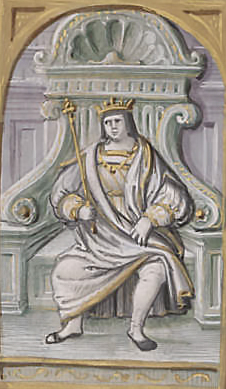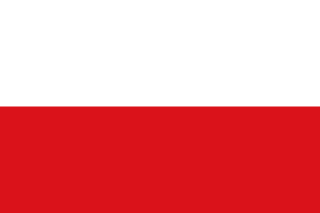Related Research Articles
Year 1455 (MCDLV) was a common year starting on Wednesday (full) of the Julian calendar.

Year 1430 (MCDXXX) was a common year starting on Sunday of the Julian calendar.

Henry IV, also known as Henry Bolingbroke, was King of England from 1399 to 1413. Henry was the son of John of Gaunt, Duke of Lancaster, himself the son of Edward III, and Blanche of Lancaster.

John II of Castile was King of Castile and León from 1406 to 1454. He succeeded his older sister, Maria of Castile, Queen of Aragon, as Prince of Asturias in 1405.
Roger Walden was an English treasurer and Bishop of London.

Henry III of Castile, called the Suffering due to his ill health, was the son of John I and Eleanor of Aragon. He succeeded his father as King of Castile in 1390.

Anthony, Duke of Brabant, also known as Antoine de Brabant, Antoine de Bourgogne and Anthony of Burgundy, was Count of Rethel (1402–1406), Duke of Brabant, Lothier and Limburg (1406–1415), and Co-Duke of Luxemburg (1411-1415). He was killed at the battle of Agincourt.

Ferdinand I named Ferdinand of Antequera and also the Just was king of Aragon, Valencia, Majorca, Sardinia and (nominal) Corsica and king of Sicily, duke (nominal) of Athens and Neopatria, and count of Barcelona, Roussillon and Cerdanya (1412–1416). He was also regent of Castile (1406–1416). He was the first Castillian ruler of the Crown of Aragon.

The House of Trastámara was a royal dynasty which first ruled in the Crown of Castile and then expanded to the Crown of Aragon from the Late Middle Ages to the early modern period.

The House of Beaufort is an English noble and quasi-royal family which originated in the fourteenth century as the legitimated issue of John of Gaunt, 1st Duke of Lancaster by Katherine Swynford. Gaunt and Swynford had four children: John Beaufort, 1st Earl of Somerset (1373–1410); Cardinal Henry Beaufort (1375–1447), Bishop of Winchester; Thomas Beaufort, 1st Duke of Exeter (1377–1426) and Joan Beaufort, Countess of Westmorland (1379–1440). When Gaunt finally married Swynford as his third wife in 1396, the Beauforts were legitimized by Pope Boniface IX and by royal proclamation of the reigning monarch King Richard II the following year.

The (Princely) County of Tyrol was an estate of the Holy Roman Empire established about 1140. After 1253, it was ruled by the House of Gorizia and from 1363 by the House of Habsburg. In 1804, the County of Tyrol, unified with the secularised prince-bishoprics of Trent and Brixen, became a crown land of the Austrian Empire. From 1867, it was a Cisleithanian crown land of Austria-Hungary.

Walter Skirlaw was an English bishop and diplomat. He was Bishop of Durham from 1388 to 1406. He was an important adviser to Richard II of England and Henry IV of England.
Events from the 1430s in England.
Events from the year 1455 in England.
Events from the 1460s in England.

Edmund Beaufort, 2nd Duke of Somerset, 4th Earl of Somerset, 1st Earl of Dorset, 1st Marquess of Dorset styled 1st Count of Mortain, KG, was an English nobleman and an important figure during the Hundred Years' War. His rivalry with Richard, Duke of York, was a leading cause of the Wars of the Roses.
The Margraviate of Antwerp consisted since the eleventh century of the area around the cities of Antwerp and Breda.

The Battle of Collejares also known as the Battle of los Collejares was a battle of the Spanish Reconquista that took place in 1406 at Collejares nearby the towns of Úbeda and Baeza in Granada, Spain. The battle was fought between the Kingdom of Castile, whose forces were commanded by Henry III of Castile, and the Emirate of Granada, whose troops were commanded by Sultan Muhammad VII.
Henry Rose may refer to:
Henry de Ardern, or Henry Ardern, was a Member of Parliament for Warwickshire in 1377 and again in 1380, and for Worcestershire from November 1381.